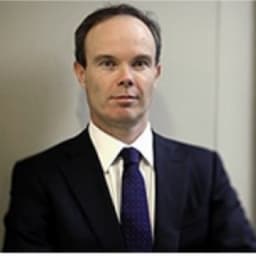Originally published by Cuffelinks
We are in uncharted waters. Prices for sovereign, corporate and high-yield bonds and equities are at, or near, record levels thanks to the ultra-low policy interest rates and the massive quantitative-easing programs of the G3 central banks (the US Federal Reserve, the European Central Bank and the Bank of Japan) over the past decade. But now two of those central banks are winding back. In response to the strengthening economic environment, the Federal Reserve is raising the cash rate and has commenced an automatic program to shrink its balance sheet while the European Central Bank has halved its asset-buying program.
Potential for reckless and explosive consequences
While the major central banks would like to engineer a ‘soft landing’ with gradual increases in interest rates, there is a material risk that they could be forced to tighten monetary policy faster than expected. In our view, the US administration’s tax cuts and recent budget measures have elevated the risks. The tax cuts and additional spending will make a fiscal injection into the US economy of nearly 2% of GDP per annum for the next two years. The timing of such a large fiscal stimulus at, or near, the top of an economic cycle when central banks are trying to exit the largest monetary expansion in modern history may prove to be reckless. The US unemployment rate at 4.1% is at a 17-year low and the US economy has added jobs over the past 88 months, which is the longest such consecutive stretch on record. While there appear to be powerful longer-term secular forces at work that are likely to result in low inflation over the longer term, there is a significant risk that the size and timing of the US fiscal stimulus could trigger a jump in US inflation, in particular from stronger wages growth, over the next year or two. This may be highly problematic for the Federal Reserve and complicate its efforts to engineer a gradual tightening with a soft landing. We cannot think of a similar combination of circumstances in modern history. The cocktail could be explosive. The best hope for investors is that either the US tax cuts and extra spending have limited effects on growth and inflation in coming years or the secular forces that have kept inflation low accelerate to offset any inflationary pressures from the fiscal stimulus.
Those hopes may well prevail, but the risks for investors over the next 12 months or so are asymmetrical to the downside. There is a meaningful probability that US inflation and wages growth will accelerate and the Federal Reserve will be forced to tighten monetary policy faster and by more than expected. On 27 February 2018 the Chairman of the Federal Reserve, Jerome Powell, responding to questions before Congress, suggested that they may need to tighten monetary policy more quickly when he said:
“At the December meeting, the median participant called for three rate increases in 2018. Since then, what we’ve seen is incoming data that suggests a strengthening in the economy and continuing strength in the labour market. We’ve seen some data that in my case will add some confidence to my view that inflation is moving up to target. We’ve also seen continued strength around the globe. And we’ve seen fiscal policy become more stimulative.”
Was it a ‘canary in the coal mine’?
If the Federal Reserve is forced to act more swiftly and forcefully than expected, it is reasonable to assume that US longer-term bond yields could jump meaningfully (above 4% compared with about 2.90% for the US 10-year Treasury bond today), which could trigger the biggest slump on world share markets since the global financial crisis. In our view, a 20% to 30% global stock market correction is within the range of outcomes in these circumstances.
What happened on 2 February 2018 may prove to be the ‘canary in the coal mine’ warning for investors. On that day, the US Department of Labor disclosed that average hourly earnings for private sector workers rose 2.9% in January from a year ago. This was the fastest rate of wages growth since 2009. The news triggered a jump in longer-term US bond yields to four-year highs and nearly a 10% correction in the US stock market.
In light of the risks, we have increased the defensiveness of the Global Equity portfolio. Over the past three months, we have increased the cash weighting of the portfolio to about 13.5% today. The increased cash weighting should enhance the defensive characteristics of our portfolio and act as a partial hedge against a potential market correction and higher interest rates in general.
It may turn out that we are wrong or premature to be so cautious. But we have no desire to remain at the party, nor be the last to leave, when we judge that risks are elevated. Investors in this environment could well take some sage advice from Warren Buffett in Berkshire Hathaway’s annual report for 2000:
“The line separating investment and speculation, which is never bright and clear, becomes blurred still further when most market participants have recently enjoyed triumphs. Nothing sedates rationality like large doses of effortless money. After a heady experience of that kind, normally sensible people drift into behaviour akin to that of Cinderella at the ball … but they nevertheless hate to miss a single minute of what is one helluva party. Therefore, the giddy participants all plan to leave just seconds before midnight. There’s a problem, though: They are dancing in a room in which the clocks have no hands.”
Hamish Douglass is Chief Executive Officer and Chief Investment Officer at Magellan Asset Management, a sponsor of Cuffelinks.
